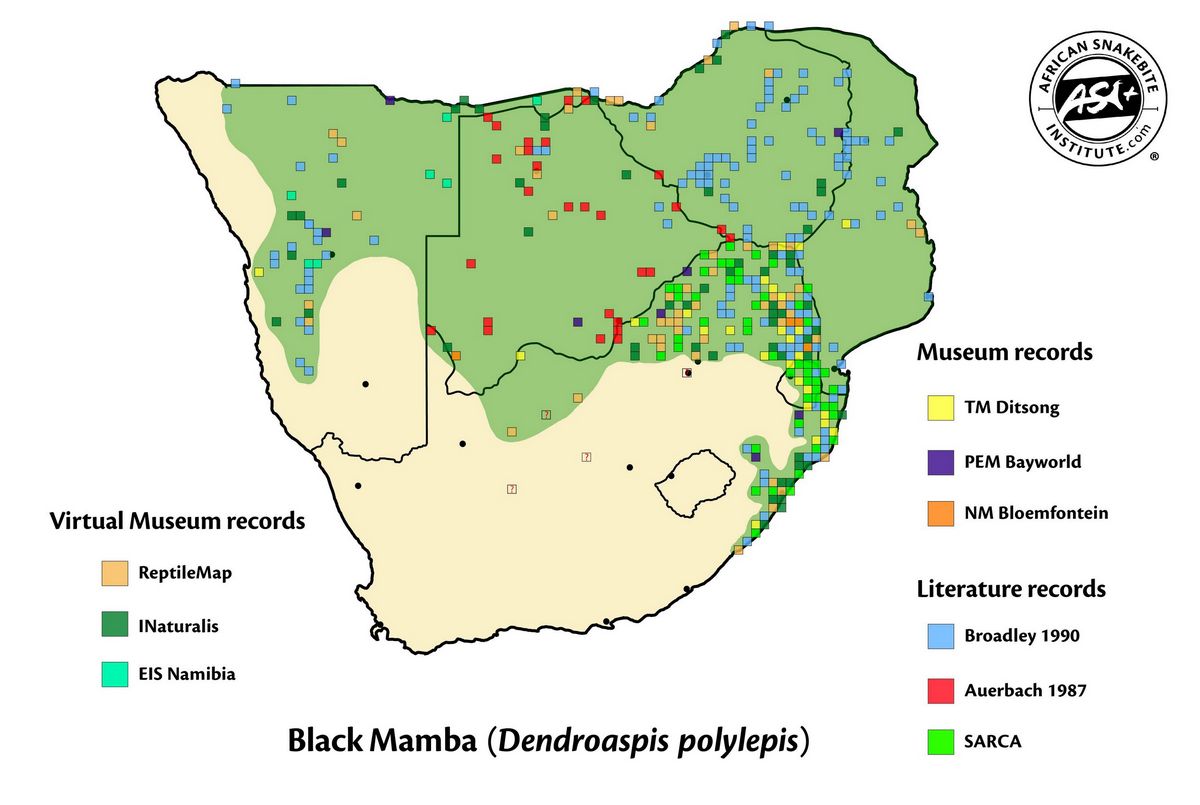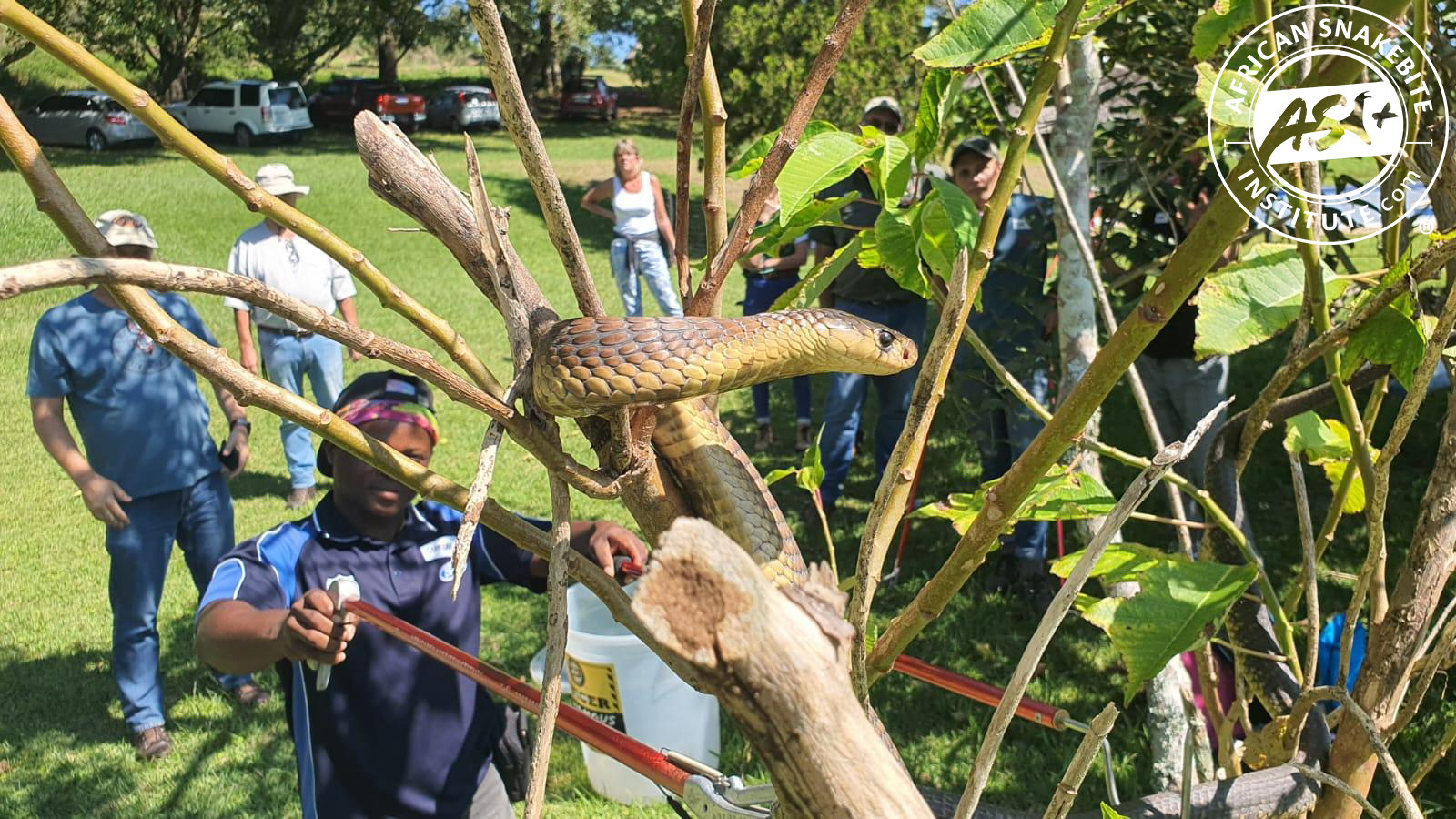|
|
|
Catching and releasing snakes - April 2023
We have over 4,000 delegates a year attend our snake awareness, first aid for snakebite and venomous snake handling courses. These courses are offered to corporate clients throughout Africa whose staff need to deal with snake encounters on site. They include the likes of mines, solar and wind farms, game lodges, bush clearing teams, power plants, construction companies, etc.
We also offer the courses to members of the public at various venues around South Africa – ideal for people who want to learn more about snakes, how to remove them from their properties or how to deal with snake encounters, and first aid for snakebite.
Our snake handling protocols have been developed over several years, and we make sure to teach the safest snake removal techniques and protocols to all our delegates. There is no compromise when it comes to snake safety!
We have also developed and manufacture a large range of quality snake handling equipment, specifically suited to African snakes, and proudly offer the largest selection of quality snake handling equipment in Africa!
We discuss catch and release logistics in our practical courses, and we have listed a few important guidelines below:
|
 |
|
We discuss catch and release logistics in our practical courses.
|
|
|
|
ASI PRO SNAKE REMOVAL KIT
The ASI Pro Snake removal kit includes:
JM100 Snake Tongs (Red)
Standard Snake Hook
Safety Goggles
750 mm Snake Tube
Cordura Snake Gaiters (Velcro – Green)
Includes heavy duty 1.2 m zip-up bag.
Price R3390.00
|
| Order here |
|
|
|
|
|
Snake Removers need to have a valid Catch and Release Permit
By law all snake removers are required to have a valid catch and release permit, which is issued by the Nature Conservation offices in their area. In most provinces, these permits are valid for 1 year.
For people removing Southern African Pythons or Gaboon or Namaqua Dwarf Adders, a TOPS (Threatened or Protected Species) permit is required. The African Snakebite Institute can assist delegates with the application for such permits through our Snake Rescue Association. Contact Sake on support@asiorg.co.za for more information.
Snake removers need to keep a catch and release logbook
Snake removers need to keep a log of what snakes are caught, where they were caught and where they were released. Taking photographs or a video of the snake being released and keeping this on file is a good idea. Your permit conditions may suggest that you need to submit a copy of this logbook to your nature conservation body. Uploading your removals to a database like the Virtual Museum ReptileMap or iNaturalist is a great way to log your removals and allows researchers to use your records to improve distribution maps of southern African snakes.
|
 |
|
Black Mamba distribution map generated from Museum and virtual museum records.
|
|
|
|
ASI Mini Snake Tongs
The ASI Mini Snake Tongs are ideal for working with small venomous snakes or removing uneaten food from enclosures.
Both the jaw and grip are manufactured from high quality aluminium, as is the anodized aluminium shaft.
Available in Red or Blue.
Price
55cm = R485.00
80cm = R495.00
|
| Order here |
|
|
|
Snake Removers need to have a set of snake handling equipment
It is vitally important to ensure that snake handling equipment is kept in good working order, and that the snake remover has easy access to it at all times. A full set includes snake tongs, a snake hook, snake tube or a snake bucket and some form of eye protection. For corporate sites, snake gaiters are often also a requirement. Some conservation bodies require a photograph of the snake handling equipment when applying for a catch and release permit.
Crowd control
When doing a removal, control the crowd. Ask for dogs to be locked away and make sure kids are being closely watched by parents and are kept away from the snake. Ask the person to monitor where the snake is whilst you are on your way. Snakes can disappear quickly into small holes or thick vegetation and are extremely difficult to locate once they disappear.
|
 |
|
People can watch the removal, but make sure they are out of your way and a safe distance from the snake. Crowd control is important.
|
|
|
|
How long can snakes be kept for?
Ideally snakes should be released as soon as possible. Wild snakes stress in captivity and the sooner you can release them back into suitable habitat, the better for them. Your Catch and Release Permit will also stipulate the number of days you are allowed to keep an animal in your possession. Some catchers may wait until bad weather or cold snaps pass before releasing the snake.
Should we feed the snake before release?
Being caught is highly stressful for snakes, and they often regurgitate their last meal. Unless the snake is kept for a long time, perhaps because of an injury that needs tending to, feeding them is not required.
Can I keep the wild snake I caught?
In all provinces, except KwaZulu-Natal, wild snakes may not be kept in captivity. A possession permit must be obtained for any indigenous captive bred reptile. Some species fall under the new Threatened or Protected Species (TOPS) act and require an additional TOPS permit. TOPs applies to all provinces of South Africa.
Species under ToPS:
Southern African Python (Python natalensis)
Gaboon Adder (Bitis gabonica)
Namaqua Dwarf Adder (Bitis schniederi)
|
 |
|
Ideally snakes should be captured, removed off site and released immediately.
|
|
|
|
|
|
|
|
WESTERN CAPE
Snake Awareness, First Aid for Snakebite and Venomous Snake Handling Course
Date: Saturday 22 April 2023
Venue: Exotic Animal World, Klapmuts, Western Cape
|
|
|
| Book here |
|
|
|
WESTERN CAPE
Venomous Snake Handling Bootcamp
Date: Sunday 23 April 2023
Venue: Exotic Animal World, Klapmuts, Western Cape
|
|
|
| Book here |
|
|
|
|
|
WESTERN CAPE
Kids' Snake Awareness Course
Date: Sunday 23 April 2023
Venue: Exotic Animal World, Klapmuts, Western Cape
|
|
|
| Book here |
|
|
|
GAUTENG
Snake Awareness, First Aid for Snakebite and Venomous Snake Handling Course
Date: Saturday 22 April 2023
Venue: Cradle Moon Lakeside Lodge, Muldersdrift, Gauteng
|
|
|
| Book here |
|
|
|
GAUTENG
Advanced Snake Handling
Date: Sunday 23 April 2023
Venue: Cradle Moon Lakeside Lodge, Muldersdrift, Gauteng
|
|
|
| Book here |
|
|
|
EASTERN CAPE
EAST LONDON
Snake Awareness, First Aid for Snakebite and Venomous Snake Handling Course
Date: Saturday 13 May 2023
Venue: Cambridge Scout Hall,
East London, Eastern Cape
|
|
|
| Book here |
|
|
|
EASTERN CAPE
PORT ELIZABETH
Snake Awareness, First Aid for Snakebite and Venomous Snake Handling Course
Date: Sunday 14 May 2023
Venue: Walmer Scout Hall,
Port Elizabeth, Eastern Cape
|
|
|
| Book here |
|
|
|
|
|
|
|
Johan Marais is the author of various books on reptiles including the best-seller A Complete Guide to Snakes of Southern Africa. He is a popular public speaker and offers a variety of courses including Snake Awareness, Scorpion Awareness and Venomous Snake Handling. Johan is accredited by the International Society of Zoological Sciences (ISZS) and is a FGASA (Field Guides Association of Southern Africa) and SASTM (South African Society of Travel Medicine)-approved service provider. His courses are also accredited by the HPCSA (Health Professions Council of South Africa). Johan is a qualified instructor for the Emergency Care & Safety Institute in Oxygen Administration and Wilderness First Aid and a qualified Basic Life Support instructor.
|
 |
|
Copyright © 2023 African Snakebite Institute, All rights reserved.
Our mailing address is:
admin@asiorg.co.za
Unsubscribe from this list
|
|
|